Text
Don’t Uncle, Be Hunkle! Practical tips to become a healthier you for every body shape
Back in school it was a lot easier to stay in shape. You could eat vast quantities of food and never put on a pound. Nowadays however, it´s a different story. Being an adult means more responsibilities and less time to consider your diet and fitness regime. And unfortunately, we just don´t burn calories like we used to! As a result, many are turning from “hunkle” to uncle.
Read on to find out what your body shape is now, and how to get in better shape with smarter food choices and fitness fixes.
The good news is, no matter what your body shape is, you can be a healthier you. The trick is to always try to match your energy intake to energy output for the day. In addition, eat well-balanced meals according to My Healthy Plate, enjoy all foods in moderation, and aim for 150 mins of moderate to vigorous physical activity (MVPA) every week. Check out this link, where you can find free, guided classes and even like-minded people to engage in physical activities with.
Check out the Go Hunkle website for simple, practical tips on how to be a healthier you, no matter what shape you are.
To read more on how to avoid turning into an uncle, click here.
0 notes
Text
How to tell if you’re turning into an uncle… and how to avoid it
Remember back when you were a teenager, and you were constantly starving? How you would keep eating until the plate (and fridge!) were empty? And yet despite the mountains of food you consumed (a lot of it not even healthy), you never gained weight. Fast forward a few years to your NS days. With all that extra physical activity, you needed even more energy, which of course you were happy to supply by eating more.

Nowadays things are slightly different. You spend your days sitting at a desk instead of sweating it out on the basketball court or outfield, and during the weekends you are so busy catching up on your social life, looking after the kids or doing house chores that there isn’t much time to hit the gym. As a result, your waistline isn’t quite what it used to be. In fact, you are looking distinctly uncle-like!
There’s a simple explanation for this transformation into an uncle-bod. It’s called ‘energy balance’. Calories come into our body in the form of food and drink. These calories are then used to fuel basic metabolic activities such as breathing, blood circulation and other bodily functions, including physical activities (exercise). If your calorie intake is greater than the amount of calories you need, you’ll put on weight.
And unfortunately, being overweight is a contributing factor to chronic diseases such as type 2 diabetes and hypertension. So while in your younger days you could eat as much as you wanted, the drop in physical activity combined with a lowered metabolic rate (another fun effect of growing older) means you’re rapidly going from fab to flab!
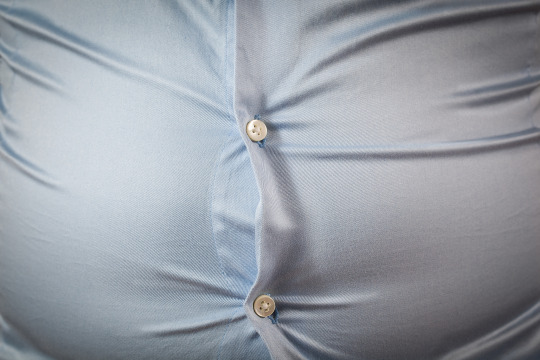
So what exactly is your body type these days? Are you more ‘hunkle’ or uncle? Generally speaking, there are four classic male shapes: triangle, inverted triangle, oval and rectangular. Read on to see if any of them sound familiar.
4 Classic Men Shapes
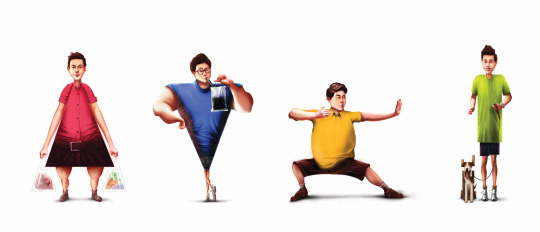
Left to right: TriHunkle (Triangular shape), Hunkules (Inverted triangle shape), Hunkle Gao (Oval shape), Hunkle Slim (Rectangular shape)
1. TriHunkle (Triangular shape)
This body type tends to store fat in the lower body, and may be carrying extra weight in the belly area. Again, this might be due to more calories being ingested than are being burnt off. While weight loss can be a bit tough for triangular-shaped men, it is definitely possible by reducing calorie intake and increasing physical activity level. Why not start by going for a brisk walk during your lunch break?
2. Hunkules (Inverted triangle shape)
Men with this body shape often have a wider, muscular upper body and lower levels of body fat. They tend to be burning off the calories they’re consuming. This body type will benefit from regular exercise and intake of lean protein to stay in shape.
3. Hunkle Gao (Oval shape)
Men with an oval-shaped body tend to have a rounder physique, possibly due to ingesting more calories than are being burnt off. They store fat easily around the waist area and can find it hard to lose weight. However, oval-shaped men can gain muscle with regular workouts, and eating healthier will help to shift any extra kilos.
4. Hunkle Slim (Rectangular shape)
This body type is usually a result of energy intake being matched by exercise levels. Men with this body type are often lean and don’t gain weight easily, but they still need to watch their diets and do regular exercise.
So you know your shape, but what now?
What do the phrases ‘eating healthier’ and ‘watching your diet’ mean in practical terms? Here are some tips to simply and easily regulate your calorie intake:
(1) Choose lower-calorie options. On average, men need around 2200 kcal every day. To help you stay within your recommended daily calorie allowance, look for lower-calorie meals when you’re dining out.
Tip: Spot this decal shown below the next time you eat out. Those meals contain less than 500 calories. But if you slip up, don’t panic! Just make sure you have a lower-calorie option for your next meal.
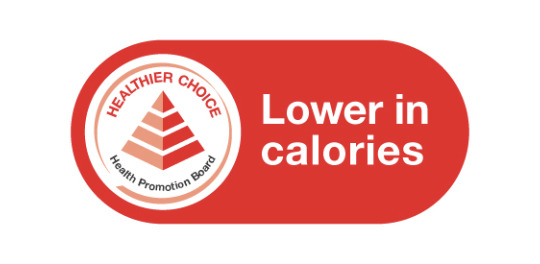
(2) Avoid high-calorie foods. These include deep-fried food and dishes cooked with coconut milk. In addition, make sure you cut back on gravies which are laden with fats and hidden sugars.
(3) Have regular meals. Well-spaced out meals will keep you energised throughout the day, while skipping or putting off meals may lead to impulsive eating and cause you to reach for unhealthy snacks.
(4) Eat healthy portions. Follow My Healthy Plate to get your portions right for each meal. Make sure you throw in a good mix of fruit and vegetables, lean meat, and wholegrains for a balanced and nutritious meal. Fruit, vegetables and wholegrains are all high in fibre, leaving you feeling satisfied, fuller for longer and less prone to overeating.

In addition to controlling your calorie intake, you should also engage in physical activity. Aim for 150 minutes of moderate to vigorous physical activity (MVPA) every week. This can be a combination of cardiovascular and strength training activities. High-intensity interval training (HIIT) is a great way to incorporate both aerobic and strength-training elements.
If you are new to strength training or HIIT, then QuickHIIT and i-Run would be an ideal platform to start as there are free, guided classes. Playing sports is also a good way to clock your MVPA while having fun at the same time. Alternatively, if you are looking for like-minded people to play football, ultimate Frisbee and other sports with, then Kaki Sports might be the right fit for you.

In summary, no matter your shape, you can get in better shape with smarter food choices and fitness fixes. Follow My Healthy Plate for a varied and balanced diet, and aim for 150 minutes of MVPA per week.
Read on for more useful tips on how to get in better shape.
You can also check out the Go Hunkle website to equip yourself with more information.
Don’t uncle, be hunkle!
2 notes
·
View notes
Text
Make your 2019 New Year’s resolutions a reality

0 notes
Text
Yahoo’s 30-Day Health Challenge

yahoo
Want to get rewarded as you keep track of your health? Download the Healthy 365 app for free now.
2 notes
·
View notes
Text
The hidden sugars in food and what we can do about it

0 notes
Text
Timeout! It’s lunch!
With work demands piling up at the office, employees may often choose to opt out of their lunch hour and stay in instead. Find out why foregoing your daily break can soon become a bad habit.

With work demands piling up at the office, employees may often choose to opt out of their lunch hour and stay in instead. Whether it is eating hastily while hunched over at the desk, rummaging the pantry for more coffee or instant noodles, or skipping lunch altogether, foregoing your daily break can soon become a bad habit.
Not only is it unrealistic to expect anyone to work for eight hours in a row, taking a break to recharge is also necessary to ensure that you remain productive and healthy at work. Here are some bright timeout ideas for your next lunch break, helping you to return to the office refreshed and ready to power through the rest of the day!
Related: How Much to Eat at Each Meal?
Midday Break Ideas

Only have an hour? Do not fret! These quick activities are easily squeezed into your lunch hour. Plus, they give you quick boost in energy too!
Get some sunshine and Vitamin D outdoors
Produced in your skin, Vitamin D is also called the “sunshine” vitamin and is important for the development of bones, fighting diseases such as flu and heart disease and keeping depression at bay. A little goes a long way, as all you need is just 10 minutes a day of sun exposure. Unfortunately, modern urban living means we often spend more time indoors or under the shade, which could limit our daily dose of Vitamin D. For your next lunch break, why not take a walk outside and get a little Vitamin D perk?
Bond with colleagues, have a laugh
Because we spend so much time working with our colleagues, it is a pity if we do not develop meaningful relationships with them outside of work. Bonding with your colleagues over a healthy lunch and having a laugh over non-work topics can be very fulfilling and the benefits can even spill over when it comes down to actual work. Getting to know colleagues in other departments that you seldom interact with can also help you appreciate the organisation as a wider whole.
Eat a healthy meal at a HDP partner
Having one hour for lunch does not mean that you have to scoff down the nearest and greasiest meal. Expand your dining options and eat at a Healthy Dining Programme (HDP) partner for a healthier option. HDP partners are committed to serving meals that are less than 500 calories and currently there are almost 500 partners in Singapore island-wide to choose from.
Related: 5 Healthier CBD Lunchtime Dining Options
Go for a mini workout
If you are up for it, hunt down the nearest gym near your workplace for a quick workout. Or, grab a colleague and find an empty room in the office to do a workout or yoga sequence available on YouTube. 20 minutes is all you need to get in an effective toning, and fat-blasting workout, so there is no excuse to not fit one in and even have time to freshen up after.
Get active:
࿁ Find a Fitness@Work event near you
࿁ Join one of HPB’s physical fitness activities

Let go of tech
With so many gadgets and screens surrounding our daily lives, why not use your lunch break as an opportunity to go tech-free? Peel your eyes away from the screen and give your mind a much-needed break. Instead, try attending a short workshop such as flower arrangement or qi gong. Taking some timeout to challenge your brain in other ways can be refreshing and rejuvenating for your mind and soul.
Catch a nap
Had one too many late nights? Take a power nap to get a quick boost in energy[1] and to supplement your lack of nocturnal sleep. Just 10 minutes is enough for a quick recharge, without grogginess, although if you can afford 60 minutes, you’ll benefit from increased memory retention too. Try skipping the caffeine and opt for a power nap instead.
Stuck in the Office?

If you cannot afford the hour out of the office, even taking a 15-minute break can help refresh and recharge your senses. Read 8 Quick Things You Can Do To De-Stress Right Now to get some ideas for a timeout in the office.
So the next time a colleague calls you out for lunch, put down your mobile phone and take up the offer — your mind and body will thank you in the long run.
Read This Next:
Fun Fruity Facts
5 Healthier CBD Lunchtime Dining Options
7 Tricks for Surviving the Food Court at Lunchtime
References
1Soong, J. (2011, Nov 29). The Secret (and Surprising) Power of Naps [Website]. Retrieved December 2016 from http://www.webmd.com/balance/features/the-secret-and-surprising-power-of-naps#
“Timeout! It’s lunch!” by Health Promotion Board © HealthHub
0 notes
Text
Hikes with Spellbinding Views
Looking for a way to fit some exercise into your holiday? Try lacing up your hiking shoes and clock in your 10,000 steps while taking in spectacular views that will have you wanting more.

Looking for a way to fit some exercise into your holiday? Try lacing up your hiking shoes and clock in your 10,000 stepswhile taking in spectacular views that will have you wanting more. Here, we introduce five hikes that will have you captivated by dancing light displays, awed by human engineering, or give you a glimpse into the majestic beauty of the Earth’s past.
Related: Five Green Spaces to Go for a Walk in Singapore
1. Northern Lights

Why it’s spellbinding: Catch dancing lights across the Arctic night sky in a display that has mesmerised many. Known as the Northern Lights or aurora borealis, the multi-coloured lights that cover the dark clear skies in the Northern Hemisphere’s polar regions are the most well-known of the auroras.
How to get there: Auroral displays can also be seen over Iceland and Greenland, and the northern parts of Norway, Finland, Sweden and Siberia. You can also catch the lights in the northern part of Canada and in Scotland and Ireland.
When to go: In the north, midnight in winter (November — February) is generally a good season to view lights, thanks to the long periods of darkness and the frequency of clear nights.
Related: Easy Travel Preparations
2. Grand Canyon

Why it’s spellbinding: Colourful and big, the Grand Canyon is rich in history and wildlife, and spectacular at any time. To top it all, it is also a world heritage site.
How to get there: You can try hikes on trails with spectacular views of the Inner Canyon for both the South Rim and North Rim. For an easier hike, try the North Rim trails that can take up to 1.5 hours for a round trip, such as the Bright Angel Point Trail, Transept Trail or the Bridle Trail. If you are fitter or more adventurous, try the steeper trails on the South Rim, or the longer trails.
When to go: March to May, and between September and November, when the daytime temperatures are cool and there are fewer crowds.
Related: 10,000 Steps a Day? Go Shopping or a Holiday
3. Great Wall of China

Why it’s spellbinding: An immense engineering and man-made marvel, the Great Wall of China has an awe-inspiring history that spans over 2,300 years with breath-taking views to boot. As you walk on this world cultural heritage, you can also have the cultural experience of trying local cuisine or interacting with the locals.
How to get there: There are several sections of the Great Wall that are open for visitors, with the most recommended being in or near Beijing. Easier routes that take up to 2 hours include Badaling, Mutianyu or Huanghuacheng. If you are fit and ready for a hike, try the trails that take several hours at Jiankou, Gubeikou and Jinshanling.
When to go: October is ideal as the temperature would be cool and it is not peak tourist season.
Related: Travelling with Conditions
4. Machu Picchu

Why it’s spellbinding: With the distinction of being one of the Seven Wonders of the World and a world heritage site, Machu Picchu is a masterpiece of engineering and is also the best-known archaeological site in South America.
How to get there: If you are looking for a gentler route, take a train to Aguas Calientes and you can trek from there to the ruins in 1.5 hours. For the fit, try the memorable and scenic Inca Trail or Lares Trail to Machu Picchu that would take 3-14 days.
When to go: The dry season during May to October, but note that the peak tourist season is from June to August. Book your hiking trip well in advance, as these tours are booked up months in advance and visitors are limited to 2,500 per day.
Related: 4 More Gorgeous Destinations to Clock 10,000 Steps
5. Himalayas, Nepal

Why it’s spellbinding: Nepal hosts some of the highest peaks in the world, with picturesque sites that boast the mesmerising views of Annapurna, Pokhara, and is a wildlife and bird watcher’s paradise.
How to get there: The treks at Nepal range from moderate to high levels of difficulty, involving several days of hiking. Each trek promises spectacular views, whether you are attempting the treks at the Mount Everest region, trails on the Annapurna circuit or in the Kathmandu Valley region.
When to go: March, April, October, November
Finally, for an enjoyable and safe hike, ensure that you plan ahead before the hike. Know yourself and choose a route that suits you and those you are hiking with. Always hike with at least one other person, and most importantly drink often to stay hydrated. Dress appropriately for the weather, and use sunscreen and a hat to prevent sunburn.
Looking for a way to track your progress? Check out HealthHub Track, the first free personal health management app for Singaporeans.
For more exercise ideas, read these next:
How to Get Your Kids Off Their Devices and onto the Playground
How Do I Get Ah Ma to Be More Active?
Gamify Your Exercise with Virtual Reality
“Hikes with Spellbinding Views” by Health Promotion Board © HealthHub
0 notes
Text
Finding it hard to live healthier? This could be why.
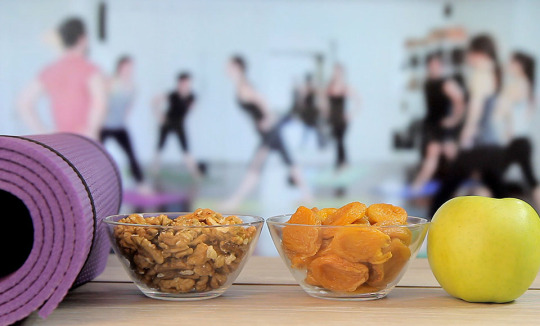
https://yahoosg-livesmart.tumblr.com/hard-to-live-healthier
0 notes
Text
How Much Sugar You’re Actually Drinking, From Green Juice To Lattes
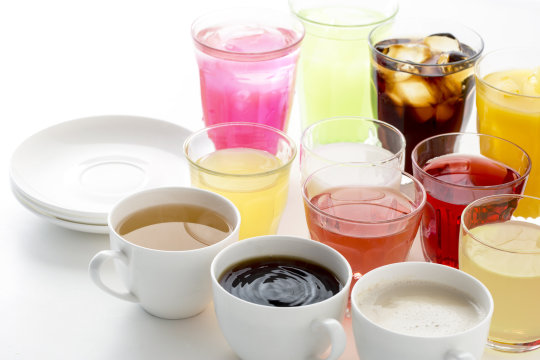
By Leigh Weingus, HuffPost
What typically comes to mind when you think of sugar-filled drinks?
If you can quickly list beverages like Coca-Cola and neon-colored fruit punch, that makes sense ― those drinks are filled with sugar. A can of Coke has a whopping 39 grams in it, while the brand Simply Fruit Punch packs 35 grams per bottle.
If you’re eating a standard 2,000 calorie-per-day diet, you should only be consuming about 25 grams of added sugar per day, according to the American Heart Association. So if you’ve managed to give up both Coca-Cola and fruit punch, you’re on the right track.
Unfortunately, soda and sugary punches are hardly where the high-sugar drink saga ends. Sugar is hiding in way more beverages than you think.
“I’d hope everyone knows that most of the commercially available drinks ― even the insanely expensive ones sold at your local health food store ― are packed with sugar,” Whole30 co-founder Melissa Hartwig told HuffPost. “But the nutrition claims on the bottle, the way they’re marketed, and even the juice names can be really misleading.”
Sugar is incredibly addictive. Some studies have found that it’s more addictive than cocaine. And too much sugar is really bad for you. Sugar consumption has been linked to a plethora of problems, from weight gain to heart disease, diabetes and fatty liver disease. Yikes.
In an effort to help demystify what the sugar industry probably doesn’t want you to know, let’s take a look at how much sugar you’re actually drinking, from your favorite Starbucks drink to that “healthy” bottle of green juice you just picked up at your local organic grocery store.
Juice
Sorry, juice devotees, but whether you’re downing a glass of old-fashioned OJ with breakfast or loading up on green juice in the name of getting your nutrients in, you’re likely consuming quite a bit of sugar.
One cup of generic orange juice has 21 grams of sugar in it, and many green juices are filled with sugar as well. For example, Juice Press’ Doctor Green Juice is packing 36 grams of sugar.
Coffee drinks
While coffee on its own doesn’t have any sugar in it, as soon as you start adding in milks and syrups, that changes quite a bit ― and not for the better. A classic Starbucks Grande Mocha made with 2 percent milk has 27 grams of sugar, while an 8-ounce bottled Iced Espresso Vanilla Latte from Starbucks has 19 grams in it.
Tea
Like coffee, tea on its own is completely sugar-free. But once you start doctoring those tea drinks, your sugar-free matcha can suddenly have 27 grams of sugar (that’s how much is in a grande Starbucks Matcha Lemonade). And at 42 grams, the sugar content in a Starbucks Chai Latte is through the roof.
Smoothies
While it is possible to prepare a low-sugar smoothie at home, the bottled smoothies sold at grocery stores are typically pretty high in sugar.
Consider a Naked Juice Strawberry Banana Smoothie. Despite not having any added sugar, these smoothies still have 23g of sugar per bottle. Now consider a Naked Juice Mighty Mango Smoothie of the same size and you’ll be even more shocked: It has 57 grams of sugar.
While these drinks don’t technically have added sugar, when you serve up fruit in smoothie form, you lose most of the fiber. This means your body will process these smoothies like straight-up sugar.
“Health” drinks
While drinks like coconut water and kombucha do have their health benefits, you’re fooling yourself if you think they’re sugar-free. Popular coconut water brand Vita Coco has 11 grams of sugar per bottle, while gut-healthy kombucha can have quite a bit of sugar in it as well. A 16-oz. bottle of Health Ade pomegranate kombucha, for example, has 14 grams of sugar.
So, what should you drink?
If you’re thinking the only healthy beverage left is water, you’re onto something ― but you don’t have to chug H20 until the end of time to stay healthy. Happy Gut author Dr. Vincent Pedre said that while some non-water drinks do contain health benefits (and are delicious!) it’s important to become a label detective and steer clear of drinks that have more than three ingredients in them.
“And don’t think artificial sugars, like aspartame or sucralose, are a healthy substitute,” he added. “You can use stevia as a sweetener, but in the end it’s best to let your taste buds adjust to having less sugar overall.”
Hartwig said that when you’re ordering coffee or tea, specify that you want it unsweetened. “If you’re not sure whether a drink you’re ordering contains sugar, ask,” she said. “It’s also important to familiarize yourself with all of the sneaky ways companies try to add sugar into your beverages (and foods) under the radar, in healthy-sounding terms like ‘coconut nectar’ or ‘agave syrup.’”
Does everything besides water contain massive amount of sugar? No, but a lot of it does. So read labels with care, because let’s be honest: Intentionally eating your sugar in the form of a delicious chocolate chip cookie is a lot more fun than unknowingly drinking it.
yahoo
This article originally appeared on HuffPost.

HuffPost
0 notes
Text
We should never have told people they could ‘burn off’ calories
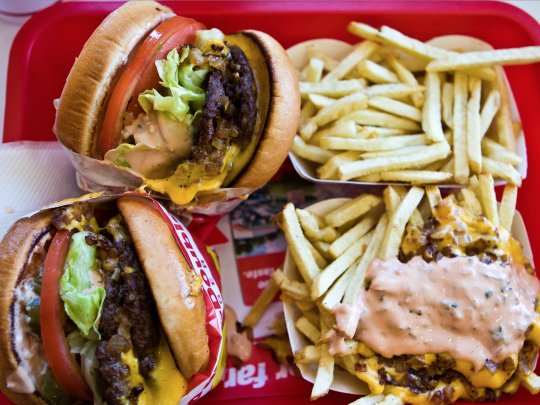
Flickr/@kevinv033
By Erin Brodwin, Business Insider
Count your steps. Hit the gym. Bike to work. If you’ve tried to lose weight, you know it’s important to get moving. But with all our emphasis on working out to “burn off” what we eat, experts say we’ve missed the real problem: What we eat.
“There’s a persistent myth that you can exercise your calories away,” Andy Bellatti, a registered dietitian and the cofounder of Dietitians for Professional Integrity, told Business Insider.
In reality, while getting active is important for your mood and overall wellbeing, it generally does not result in rapid weight loss. On the other hand, successfully changing your diet might.
Dietary changes are especially important at the beginning of any new weight loss plan, Bellatti said, since people who are trying to lose weight by dedicating hours each day to exercise may get discouraged when the pounds don’t magically melt off. Instead, it’s better to focus on making gradual changes to your diet, such as eating more vegetables and cutting back on refined carbohydrates.
A large recent review of studies involving more than 3,000 obese adults who’d lost weight on a low-calorie diet compared how well they were able to keep it off after they either stuck to a new eating plan or began exercising regularly. While permanently tweaking their diets appeared to help maintain weight loss, “no significant improvements were seen for … exercise,” they wrote.
One reason diet may play such a strong role in weight loss is that exercise burns off far fewer calories than most people think, said Philip Stanforth, a professor of exercise science at the University of Texas and the executive director of the Fitness Institute of Texas. This holds especially true when compared to the high caloric content of many processed and fast foods like burgers, fries, and milkshakes. Many classic fast food meals can add up to thousands of calories, sometimes exceeding the amount most adults need in a day.
“Thinking practically, keep in mind you’d have to walk 35 miles [roughly 2.6 times the length of Manhattan] to burn 3,500 calories,” Stanforth said. “That’s a lot of walking.”

Shutterstock
That’s not to say exercise is unimportant.
Another large review of studies that included more than 1,000 adults suggested that in the long-term (a year or more), providing people with a weight loss plan that combines a healthy eating regimen and regular exercise helped people lose more weight than either diet or exercise alone.
A wealth of recent research also suggests that when it comes to the brain, aerobic exercise may be the wonder drug we’ve long been looking for. Not only have sweaty workouts been linked with boosting your mood; they’ve also been found to protect against age-related decline and may even improve memory.
“While exercise might not be the key to weight loss, it is important for health overall, especially for mental health,” Bellatti said.
NOW WATCH: The pros and cons of drinking protein shakes after a workout
The post We should never have told people they could ‘burn off’ calories appeared first on Business Insider.

Business Insider
1 note
·
View note
Text
11 fitness myths that are doing more harm than good

Shutterstock
By Erin Brodwin, Business Insider
Whether you want to tone up, slim down, or boost your mood, you’ve likely taken a stab at tweaking your fitness routine.
Unfortunately, there’s a lot of fitness advice out there that won’t help you meet your goals and could actually do more harm than good.
Here’s an overview of some of the most enduring workout myths and misconceptions, as well as the real science that can help you meet your fitness goals in a healthy way.
Myth: To stay in shape, you only need to work out once or twice a week.

Truth: Once or twice a week won’t cut it for sustained health benefits.
“A minimum of three days per week for a structured exercise program” is best, Shawn Arent, an exercise scientist at Rutgers University, recently told Business Insider. “Technically, you should do something every day, and by something I mean physical activity — just move. Because we’re finding more and more that the act of sitting counteracts any of the activity you do.”
Myth: The best time to work out is first thing in the morning.

Truth: The best time for a workout is whatever time allows you to exercise most consistently. Ideally, you want to make physical fitness a daily habit, so if late-night trips to the gym are your thing, stick with it. If you prefer a morning run, do that instead.
Don’t have a preference? Some research suggests that working out first thing in the morning might help speed weight loss by priming the body to burn more fat throughout the day.
Myth: Weight lifting turns fat into muscle.
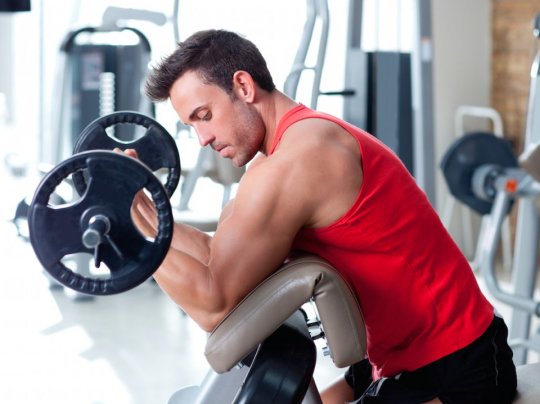
Truth: You can’t turn fat into muscle. Physiologically speaking, they’re two different tissues. Adipose (fatty) tissue is found under the skin, sandwiched between muscles, and around internal organs like the heart. Muscle tissue — which can be further broken down into three main types — is found throughout the body.
What weight training really does is help build up the muscle tissue in and around any fat tissue. The best way to reduce fat tissue is to eat a healthy diet that incorporates vegetables, whole grains, lean proteins and — somewhat paradoxically — healthy fats like olive oil and fish.
Myth: Puzzles and games are the best ‘brain workout’ around.

Truth: Plain old physical exercise seems to beat out any type of mental puzzle available, according to a wealth of recent research. Two new studies published this spring suggest that aerobic exercise — any activity that raises your heart rate and gets you moving and sweating for a sustained period of time — has a significant, overwhelmingly beneficial impact on the brain.
“Aerobic exercise is the key for your head, just as it is for your heart,” wrote the authors of a recent Harvard Medical School blog post.
Myth: Exercise is the best way to lose weight.

Truth: If you’re looking to lose weight, you shouldn’t assume that you can simply “work off” whatever you eat. Experts say slimming down almost always starts with significant changes to your eating habits.
“In terms of weight loss, diet plays a much bigger role than exercise,” University of Texas exercise scientist Philip Stanforth tells Business Insider.
That said, being active regularly is an important part of any healthy lifestyle. And when it comes to boosting your mood, improving your memory, and protecting your brain against age-related cognitive decline, research suggests exercise may be as close to a wonder drug as we’ll get.
Myth: Sit-ups are the best way to get 6-pack abs.

Truth: As opposed to sit-ups, which target only your abdominal muscles, planks recruit several groups of muscles along your sides, front, and back. If you want a strong core — especially the kind that would give you 6-pack-like definition — you need to challenge all of these muscles.
“Sit-ups or crunches strengthen just a few muscle groups,” write the authors of the Harvard Healthbeat newsletter. “Through dynamic patterns of movement, a good core workout helps strengthen the entire set of core muscles you use every day.”
Myth: Weight training is for men.

Truth: Weight training is a great way to strengthen muscles, and has nothing to do with gender. That said, women produce less testosterone on average than men do, and studies suggest that hormone plays a role in determining how we build muscle.
Myth: It takes at least two weeks to get ‘out of shape.’

Truth: In most people, muscle tissue can start to break down within a week without regular exercise.
“If you stop training, you actually do get noticeable de-conditioning, or the beginnings of de-conditioning, with as little as seven days of complete rest,” Arent said. “It very much is an issue of use it or lose it.”
Myth: Running a marathon is the ideal way to get fit.

Truth: Not ready to conquer a marathon? No problem. You can get many of the benefits of long-distance running without ever passing the five-mile mark.
Running fast and hard for just five to 10 minutes a day can provide some of the same health outcomes as running for hours can. In fact, people who run for less than an hour a week — as long as they get in those few minutes each day — see similar benefits in terms of heart health compared to those who run more than three hours per week.
Plus, years of recent research suggest that short bursts of intense exercise can provide some of the same health benefits as long, endurance-style workouts — and they also tend to be more fun.
Myth: Keeping a food diary is a reliable way of monitoring and controlling what you eat.

Truth: Even when we’re making an effort to be conscious about what we’re putting into our bodies and how active we’re being, we often give ourselves more credit than we deserve.
“People tend to overestimate their physical activity and underestimate how much food they eat,” says Stanforth. “They consistently think they’ve worked out more and consistently think they’ve eaten less.”
Myth: Sports drinks are the best way to re-hydrate after a workout.

Truth: Most sports drinks are just sugar and water. Instead, experts recommend refueling with plain old water and high-protein snack, since studies suggest protein helps recondition muscles after a workout.
The post 11 fitness myths that are doing more harm than good appeared first on Business Insider.

Business Insider
2 notes
·
View notes
Text
What is a Healthy Weight?
As obesity is a serious threat to your health, it's important to understand the right way to lose weight. Here are some things you should know about why it's important to maintain a healthy weight and how to manage your weight effectively.
How To Achieve A Healthy Weight
In order to achieve a healthy weight, it is important to first understand the dangers of obesity. Obesity is a condition in which excess body fat accumulates and puts you at risk of a variety of health problems. This excess fat may reduce life expectancy and increase the risk of other health problems, so it is vital to maintain a healthy weight.
Related: What Exactly are Calories?

Know Your BMI
There are many ways to measure body fat. However, the simplest is by calculating your Body Mass Index (BMI). BMI measures the relationship between your weight and height to calculate the amount of body fat you have. The higher your BMI, the higher the amount of fat in your body.
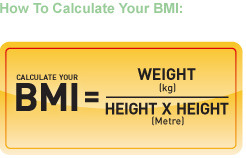
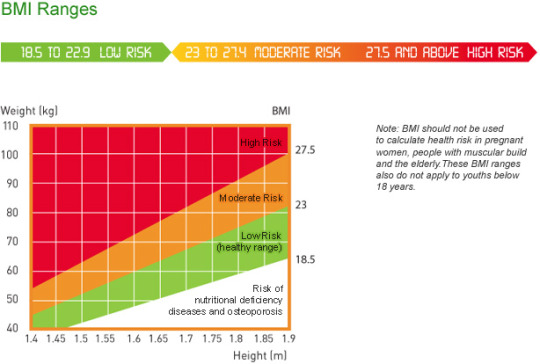
The Effects Of Obesity
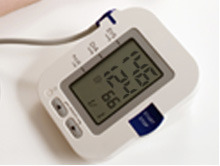
Being overweight puts you at risk of numerous health problems including:
High blood pressure
Diabetes
Coronary heart disease
Certain cancers
Bone and joint disorders
It is important to maintain a healthy weight to reduce your likelihood of developing one of these chronic diseases. Losing weight is not only healthy for your body but also your mind. When you look better, you feel better about yourself. This can give you more confidence to do things you never thought you could.
Losing Weight the Right Way
Weight management is all about energy balance. To maintain your weight, you must balance the amount of energy you get from food and drinks with the amount of energy your body uses for daily physical activity. Consuming more energy than you need will lead to weight gain, while burning more energy than you consume will lead to weight loss.
Calories in > Calories out = Weight gain
Calories in < Calories out = Weight loss
Calories in = Calories out = Weight management
Related: The Basics of Weight Loss
Make It A Lifestyle
Successful weight management is a lifestyle. Any healthy weight management plan should incorporate the principles of healthy eating and active living. These habits should become something you grow to enjoy and can include in your daily life. Changing your diet alone or becoming more physically active without eating healthier foods will not be as effective as doing both at the same time.
Here are two tips that can help you manage your weight healthily:
1. Set Smart Weight-Loss Goals
SMART goals are Specific, Measurable, Attainable, Realistic and Time-bound. Write down these goals so you can monitor your progress over time.

What is a healthy weight loss goal?
Losing weight does not happen overnight. Fad diets and quick weight-loss fixes are not sustainable in the long term and may be harmful to your body. A good, healthy weight loss programme should adopt the concept of energy balance as its guiding principle. To lose weight, your body needs to burn more calories than you consume. This can be achieved through a balanced diet and regular physical activity.
If your BMI is 23 kg/m2 and above, losing 10% to 15% of your current body weight over 6 months at a rate of 0.5kg to 1 kg a week is a healthy target.
Related: 5 Signs You're Taking Your Diet Too Far
2. Track Your Progress
A good weight management plan should also include regular monitoring of your progress and maintenance of the weight loss in the long term. Reviewing your progress can help you identify things you have done well and things you struggle with. For example, you may be doing at least 150 minutes of moderate intensity aerobic activity per week but find it difficult to make healthier meal choices. Knowing this can help you reassess your action plan.
You should also regularly review your goals to see if they are realistic. Not everyone follows the same weight loss pattern so you may have to adjust your target in order to reach your goal. To keep track of your caloric intake, you can download the Healthy 365 app to find out the caloric content of common food in Singapore. It can also help to calculate your personal calorie requirements.
So Remember
Know your BMI. Obesity puts you at risk of many diseases. The basics of a healthy, successful weight management programme lie in making it a lifestyle, setting SMART goals and monitoring your progress.
Want to know more? Read these next:
Nutrition 101: A Guide to Grocery Shopping
How You Can Lose Weight By Snacking More
How Much to Eat at Each Meal
“What is a Healthy Weight?” by Health Promotion Board © HealthHub
0 notes
Text
Eating Light At A Hawker Centre Is Possible
Find out which dishes make good lighter choices, so that you can easily make a healthier choice the next time you dine out at the hawker centre.

One-third of Singaporeans eat out more than seven times a week, with 80% of Singaporeans eating out at hawker centres more than once a week[1]. Preliminary analysis also showed that people who usually eat out at food centres consumed 200 kcal more or about 10% more than those who seldom eat out[2].
While hawker centres are affordable and convenient, they often do not provide the healthiest meals. However, with HPB recruiting hawker centres around the island into the Healthier Hawker Programme, numerous well-loved haunts now feature healthier, low-calorie options too.
Read on to find out which dishes make good lighter choices, so that you can easily make a healthier choice the next time you dine out at the hawker centre. Be sure to look out for the HPB Healthy Hawker Eats
1. Fish Soup

Light and satisfying, this healthy broth soup containing fresh and nutritious slices of fish is a clear winner. To make this dish even healthier, ask for more vegetables.
Related: Survive the Hawker Paradise
2. Chapati

Unlike its oilier prata counterpart, chapati uses no lard and can be made with wholemeal flour for a healthier alternative. Dip it in dhal or lentil soup for added plant protein.
Related: Power Hawker Diet to Match Your 10,000 Steps
3. Herbal Tonic Soup

Get a nutritious boost with a Chinese herbal tonic soup such as watercress soup or lotus root soup. Featuring herbs such as goji berries and red dates, these soups are nourishing as well. Skip the rice if you want to really save on the calories.
Related: 7 Tips on Surviving the Food Court at Lunchtime
4. Wanton Noodles
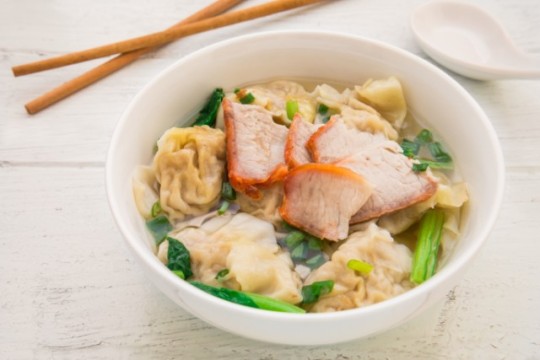
This staple Singapore dish clocks in at a little over 400 calories, making it a firm favourite that is also light. Look out for stalls that use leaner cuts of meat and avoid the deep-fried wontons.
Related: Affordable and Nutritious Local Dishes!
5. Seafood Spaghetti in Tomato-based Sauce

Tomato-based sauces are less fattening than cream-based sauces, and also contain vital lycopene, which can help to lower stroke risk. Wholegrain spaghetti further turn this hearty dish into a wholesome one.
Related: No Wholegrain, No Gain
6. Mee Soto
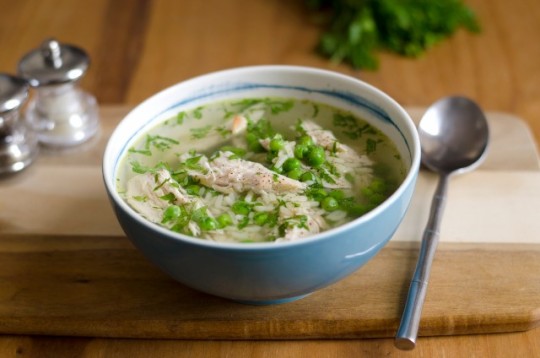
A light broth with egg, shredded chicken, bean sprouts and topped with chives, this noodle dish is a guilt-free indulgence — just hold the begedil and ask for vermicelli to replace the yellow noodles in this dish.
Related: 5 Steps to Healthier Workplace Meals
7. Ipoh Hor Fun
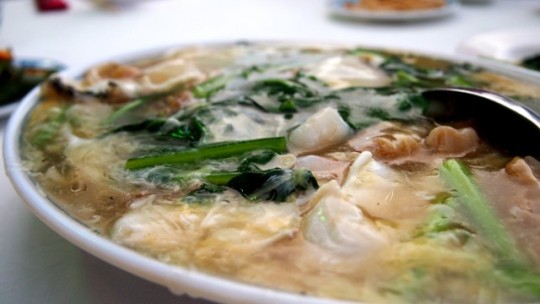
Even with gravy, this dish featuring flat white noodles, shredded chicken, mushrooms and vegetables is less than 500 calories, making it a healthier choice at the hawker centre.
Related: The Devil Eats Char Kway Teow
8. Porridge

Everyone’s favourite comfort food is not only lower in calories, most hawkers also use minimal oil! When served piping hot, porridge makes you savour your meal slowly, so that you feel full and satisfied earlier and are less likely to eat more.
For more ideas on how to eat healthily at hawker centres, read our Hawker Hacks!
"Eating Light At A Hawker Centre Is Possible” by Health Promotion Board © HealthHub
0 notes
Text
You can be overweight and still be active and healthy

By Anjana Motihar Chandra, Yahoo Lifestyle Singapore
If you are physically active but overweight, don’t worry: Research suggests that physical activity may actually help combat some of the negative effects of excess weight. Physical activity leads to physical fitness which in turn is likely to make you metabolically healthy and fit – this means no high blood pressure, high cholesterol or high blood sugar.
Researchers at the Cooper Institute, a non-profit organisation in Dallas in the United States, found in a study that fit men in all weight categories – normal weight, overweight, obese – had significantly lower death rates from cancer than unfit men.
Another study published in the European Heart Journal found that individuals who were overweight or obese, but metabolically healthy and fit, did not have a greater risk of developing or dying from cardiovascular disease or cancer than normal weight individuals. Researcher Francisco Ortega, one of the authors of the study said, “… getting more exercise broadly and positively influences major body systems and organs and consequently contributes to make someone metabolically healthier, including obese people”.
So, instead of fretting about those extra kilos and dieting to lose weight, focus on exercise to get physically fit.
Tips to start exercising if you are overweight:
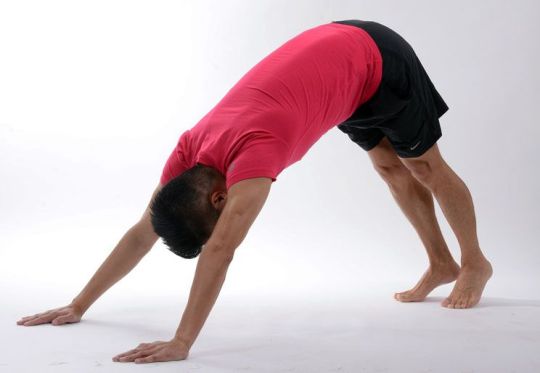
(Pilates. Photo: Pixabay)
Exercise at home with free workout videos. Fix a time to do this every day, preferably in the morning before you set out for the day.

Get a friend or your partner to join you for a walk, jog or run: Having company makes the exercise more enjoyable and also increases your commitment to it.
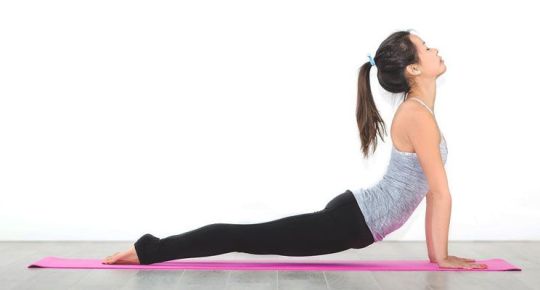
Join a yoga class: Yoga is a holistic exercise that improves flexibility, builds muscle strength and boosts cardiac health.

Find a gym near your home or workplace: It’s easier to go to a gym if it’s conveniently located. If it’s near your workplace, schedule your workout at lunchtime so you don’t get delayed returning home after work.
0 notes